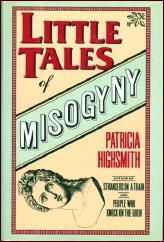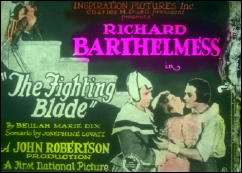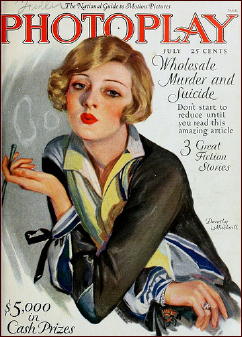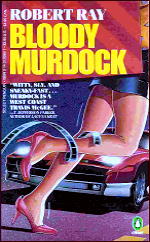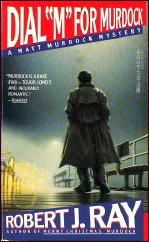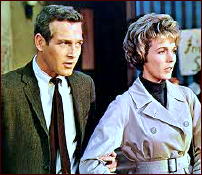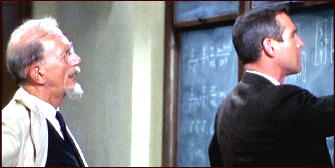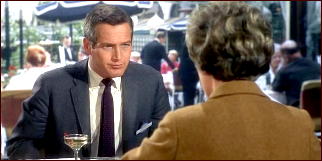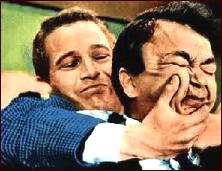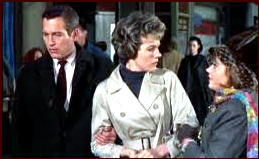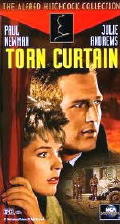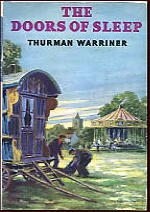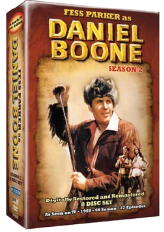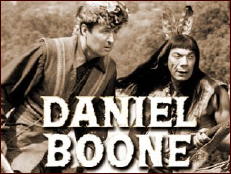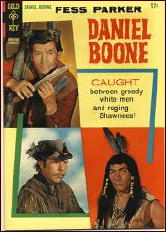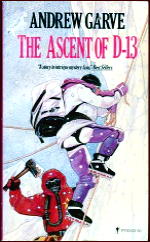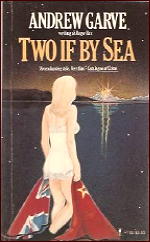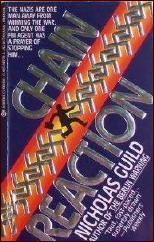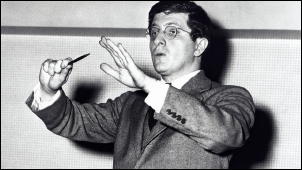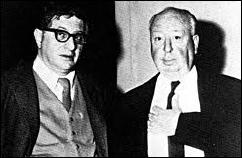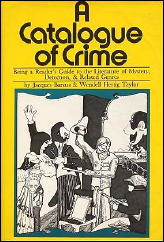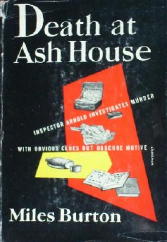TV REVIEW AND HISTORY – THE FILES OF JEFFREY JONES
by Michael Shonk.
The Files of Jeffrey Jones. CBS Television Film Sales. Lindsley Parsons Productions. Syndicated, 1952. 39 episodes x 30 minutes. CAST: Don Haggerty as Jeffrey Jones, Tristran Coffin as Lt. Doyle, Gloria Henry as Michelle “Mike†Malone, Vince Barnett as Joe.
The following episode can be viewed at TV4u.com at this link. Scroll down and click on Files of Jeffrey Jones. Yes, that is a picture from Cases of Eddie Drake. Poor Jeff, when will people realize he is his own man?
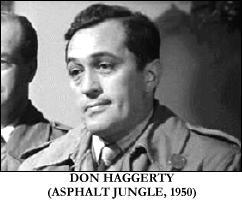
“Killer Bait.†Written by Robert Raynor and Warren Douglas. Directed by Lew Landers.
We open on a title card with a painting of a city at night. The episode title is featured larger and above “from the files of JEFFREY JONES.†The copyright is 1952. Playing over this is the worst theme music in television history.
PI Jeffrey Jones arrives at his “office,†a Hollywood bistro called The Golden Bubble. Jeff, who had been studying for a law school exam, learns from the bartender (Frank Sully) everyone wants him to drop his client, a client Jeff did not know he had.
There is a shipment of counterfeit one hundred dollar bills missing that is upsetting cops and mobsters alike. Jeff is beaten up by the bad guys, yelled at by Lt Doyle, and discovers two murder victims, all before he meets his “client,†who denies hiring Jeff.
The client is framed for one of the murders. Jeff stays one step ahead of the cops as he eliminates suspect after suspect until he finds the killer in time for the final shoot out.
You could see Haggerty was having fun with the smart aleck PI Jeffrey Jones. There were two femme fatales (played by two bad actresses), a couple of goons from Kansas City, an OK mystery driven by fistfights, and a script with a sense of humor.
When the cops find Jeff in a locked closet recovering from his latest beating, Doyle asks him what he is doing there. Jeff replies, “Playing hide and seek.â€
The production values were above average for the time. Short scenes helped speed the pace of the episode, but the scenes themselves were too static, with director Lew Landers holding too long on each shot.
If you are willing to forgive the limitation of the times, this is an entertaining TV PI show.
THE FILES OF JEFFREY JONES began shooting April 17, 1952 (Broadcasting, April 14,1952). While the exact date of when Jeffrey appeared on TV is still unknown, it was no later than June 7, 1952.
The series was a hit from almost the beginning. According to a CBS Television Film Sales ad in Broadcasting (February 23, 1953), in less than eight months on the air the series was in 25 markets and in Telepulse’s Top Five ratings for syndicated film shows.
The series took place in Hollywood (not New York as many claim today). The episode “Killer Bait†was missing two cast members, Michelle “Mike†Malone, a newspaper reporter played by Gloria Henry and Jeff’s friend Joe, played by Vince Barnett. Both actors were listed as cast members in the trades’ news reports and series’ ads (Billboard and Broadcast).
Those who remember my earlier reviews of The Cases of Eddie Drake (links below), watched the episode “Shoot The Works†(link below) and read the two shows’ credits, now know Jeffrey was not produced by the same people who did Cases of Eddie Drake as is believed today.
The series have only two things in common, star Don Haggerty and CBS Television Film Sales. So why do so many reference books and sites have this wrong?
According to Broadcasting (February 25, 1952 and April 14, 1952), CBS TV Film Sales sold both series to sponsor Crawford Clothes Inc (via Al Paul Lefton Co. New York) to air on DuMont’s New York station WABD.
Eddie Drake would start March 6, 1952 and run its 13 episodes. Once Eddie was done, Jeffrey Jones took over the time slot (on June 7, 1952). Jeffrey was originally scheduled to do 26 episodes but at some point expanded to 39. The two series would continue to be linked as CBS sometimes sold them together as a package to stations (Billboard, May 21, 1955).
Sadly, Files of Jeffrey Jones and Cases of Eddie Drake will always be connected because both starred one of television’s first original stars.
In an article in Broadcasting (September 13, 1954) about residuals and early television, “But TV has created its own stars, as Mr. Haggerty can testify. In 1948, shortly after he appeared in the live NBC-TV Mr. and Mrs. North, first play televised in New York, he was starred in CBS-TV Cases of Eddie Drake, second TV series filmed. However, both Eddie Drake and the first 26 segments of Jeffrey Jones were filmed prior to the SAG agreement date and as one of TV’s newest stars, Mr. Haggerty was unable to negotiate any residual deal himself.â€
The same article had Haggerty explain why so many series stars agreed to promote the sponsor’s product during the show’s commercial break, “the star makes more money from the commercials than from the program.â€
The Files of Jeffrey Jones was still available from CBS for syndication in 1963 (Broadcasting, March 25, 1963). Why isn’t this series on DVD?
OF ADDITIONAL INTEREST:
Earlier reviews of The Cases of Eddie Drake:
https://mysteryfile.com/blog/?p=10405
https://mysteryfile.com/blog/?p=10427
https://mysteryfile.com/blog/?p=12204
The Eddie Drake episode “Shoot The Works†can be seen here.
